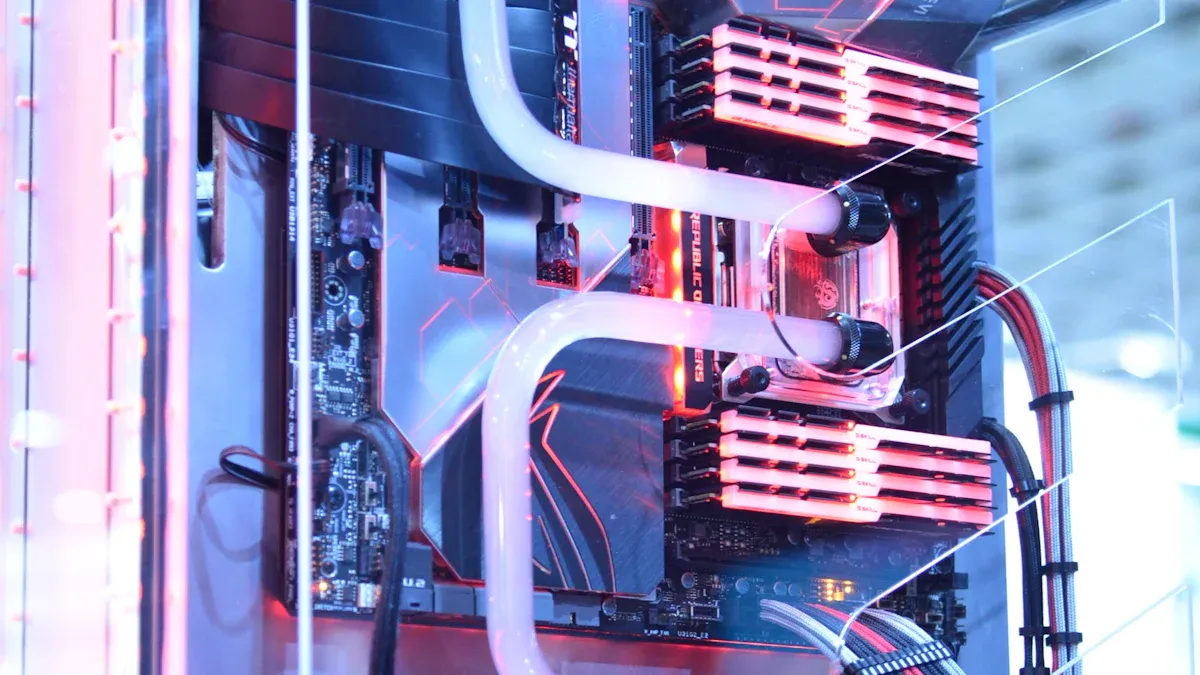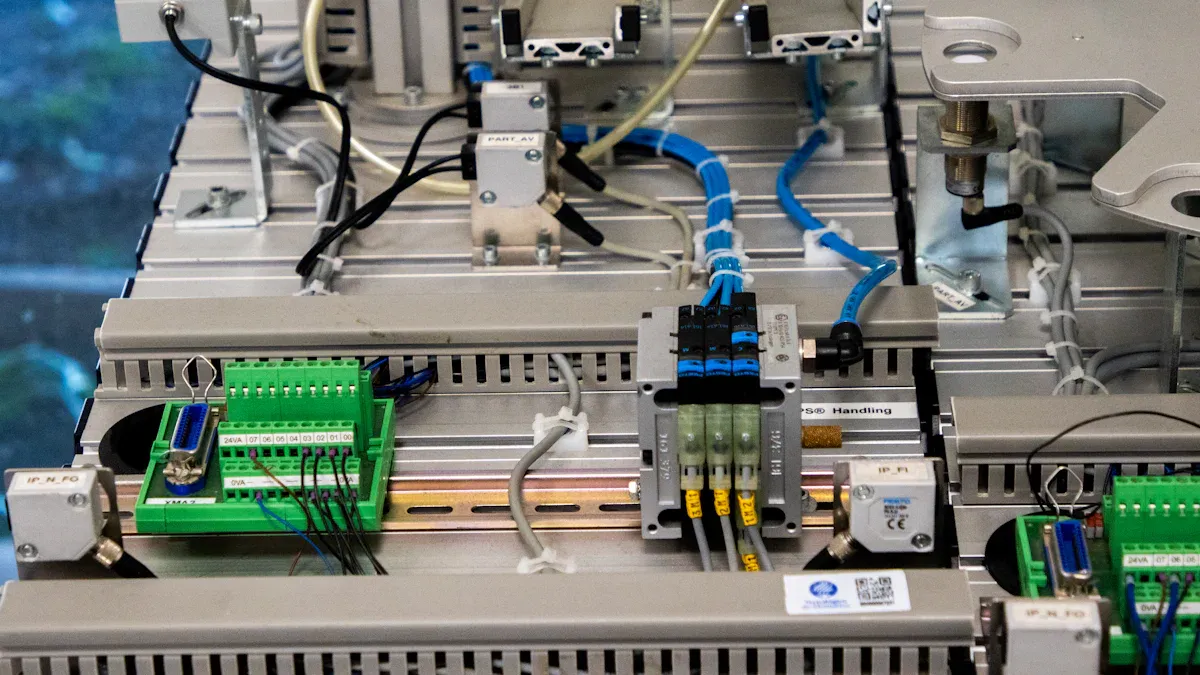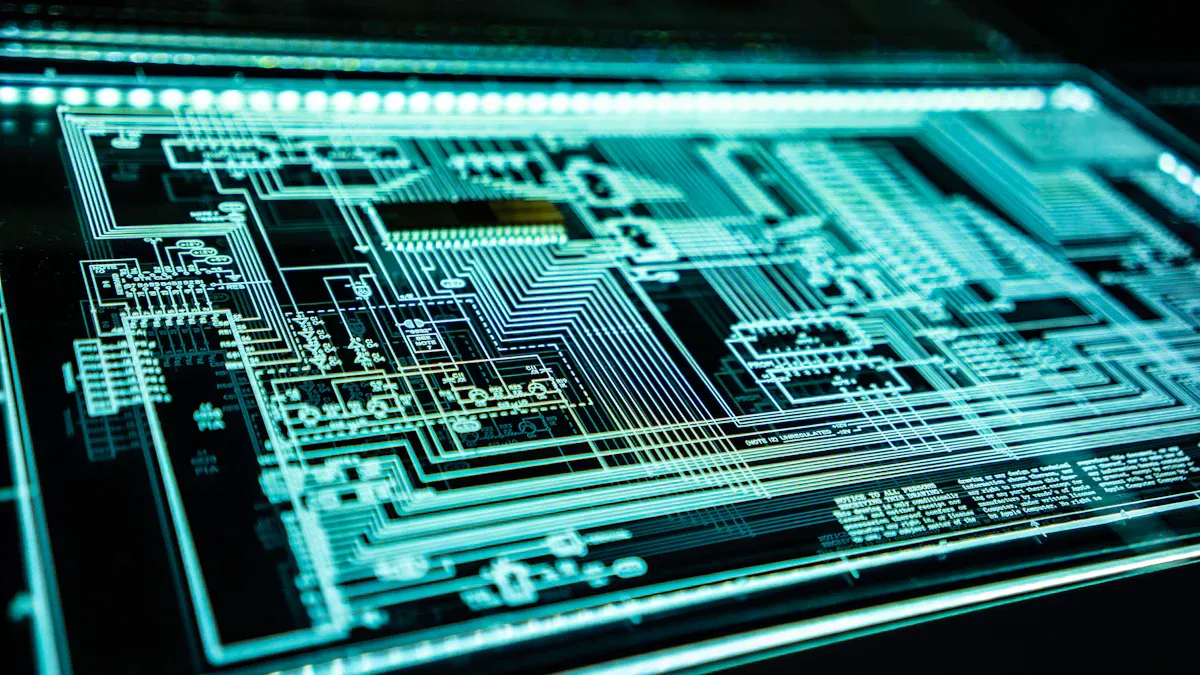
Low-volume injection molding offers a precise manufacturing process tailored for small-batch production. You’ll find it especially important in the fast-paced world of electronics, where customization drives innovation. This method enables you to create components efficiently while keeping costs low. It’s ideal for consumer electronics that demand unique designs or quick adjustments based on market needs.
Modern electronics trends, such as rapid prototyping and iterative design, thrive with low-volume injection molding. It allows you to test products quickly and refine them based on user feedback. Studies show that this approach boosts product success rates during market testing by up to sixty percent. When producing niche components, flexibility and speed are critical, and this method delivers both.
Low-volume injection molding is a manufacturing process designed for producing small quantities of parts, typically ranging from a few dozen to a few thousand units. This method uses molds made from softer materials like aluminum or low-grade steel, which reduces tooling costs and shortens production time. It is ideal for prototyping, market testing, and creating niche products.
Key features of this process include precision, cost-effectiveness, and flexibility. You can produce high-quality parts with great accuracy while keeping expenses low. The process also allows for quick design changes, making it suitable for iterative development. Below is a summary of its key features and benefits:
| Feature/Benefit | Description |
|---|---|
| Precision | Produces high-quality parts with great accuracy. |
| Cost-effectiveness | Economical for low quantities, making it ideal for low-volume production. |
| Robustness | Parts can withstand high temperatures and pressures. |
| Flexibility in Production | Capable of meeting diverse tooling and production demands. |
| Speed in Prototyping | Allows for faster design changes and evaluations without heavy expenses. |
The ability to adapt quickly to design changes makes low-volume injection molding a preferred choice for small-scale injection molding projects.
The materials used in low-volume injection molding vary depending on the application. Each material offers unique properties that make it suitable for specific uses. For example, Acrylonitrile Butadiene Styrene (ABS) is durable and impact-resistant, making it ideal for electronics housings. Polycarbonate (PC), known for its optical clarity and heat resistance, is often used in automotive lighting and medical devices.
Here’s a detailed look at some common materials:
| Material | Key Properties | Common Applications |
|---|---|---|
| Acrylonitrile Butadiene Styrene (ABS) | Durability, impact resistance | Automotive parts, electronics housings, consumer products |
| Polycarbonate (PC) | High heat, impact resistance, optical clarity | Automotive lighting, medical devices, protective gear |
| Nylon (Polyamide, PA) | High wear, chemical resistance | Gears, bushings, industrial parts |
| Polypropylene (PP) | Moisture, chemical resistance | Packaging, lab equipment, automotive parts |
| Polyethylene (PE) | Lightweight, impact-resistant | Packaging, containers |
| Thermoplastic Elastomer (TPE) | Rubber-like flexibility | Handles, grips, seals |
| Thermoplastic Polyurethane (TPU) | Abrasion resistance, elasticity | Footwear, medical devices, protective cases |
When selecting a material, you should consider factors like durability, resistance to heat or chemicals, and the intended application of the part.
Low-volume injection molding differs significantly from high-volume manufacturing in terms of production scale, costs, and flexibility. While high-volume manufacturing focuses on producing millions of identical parts, low-volume injection molding caters to smaller batches. This makes it more suitable for prototyping and specialized products.
For example, low-volume injection molding typically uses molds with one or two cavities, which reduces tooling costs. In contrast, high-volume manufacturing relies on multi-cavity molds to produce large quantities efficiently. The table below highlights some key differences:
| Criteria | Low Volume Injection Molding | High Volume Injection Molding |
|---|---|---|
| Production Quantity | Smaller batches, typically ranging from a few dozen to thousands of units. | Large batches, often in the range of thousands to millions of units. |
| Costs | Lower upfront costs due to reduced tooling and setup needs. | Higher initial investment in molds and setup. |
| Flexibility | Allows for design changes between batches, ideal for prototyping and testing. | Design is typically fixed after the initial setup for mass production. |
| Lead Time | Shorter lead times due to fewer parts being produced. | Longer lead times owing to the vast number of parts produced. |
| Quality Assurance | More focused quality control on smaller batches ensures higher consistency. | Continuous quality control, but issues may take longer to address due to batch size. |
| Application | Best suited for prototyping, market testing, and specialized products. | Ideal for established products that have steady, high-volume demand. |
Low-volume injection molding offers greater flexibility and lower costs, making it an excellent choice for small-scale injection molding projects. You can quickly adapt to design changes and bring products to market faster.

Low-volume injection molding offers a cost-effective solution for small-batch production. Unlike traditional manufacturing, which requires large production runs and significant upfront investments, this method focuses on reducing costs while maintaining quality. You can achieve this through several key advantages:
For example, small batch injection molding uses inexpensive molds, allowing you to create high-quality parts at a fraction of the cost of full-scale manufacturing. This makes it an excellent choice for companies with tight budgets or those testing new products in the market.
One of the standout benefits of low-volume injection molding is its flexibility in design. You can easily make adjustments to your product designs without incurring significant costs or delays. This is particularly valuable for industries that require frequent design iterations, such as consumer electronics and automotive manufacturing.
A recent analysis highlights how companies benefit from this flexibility:
| Industry | Company Type | Lead Time Reduction | Cost Reduction | Design Iteration Improvement |
|---|---|---|---|---|
| Automotive | Leading automotive manufacturer | 60% | 30% | Faster validation of designs |
| Consumer Electronics | Consumer electronics company | 40% | N/A | Quick production of variants |
| Aerospace | Aerospace company | 50% | 20% | Faster regulatory testing |
This adaptability allows you to refine your designs quickly, ensuring your products meet market demands. Whether you’re creating custom products or testing new ideas, low-volume injection molding provides the design flexibility you need to stay competitive.
In the fast-paced world of electronics, getting your product to market quickly is crucial. Low-volume injection molding accelerates this process by enabling rapid prototyping and efficient production runs. Companies like Mack Molding have demonstrated how separating the New Product Introduction (NPI) process from production can significantly improve time-to-market.
Here’s how this method helps you bring your products to market faster:
By leveraging low-volume injection molding, you can respond to market trends and customer feedback more effectively. This approach not only saves time but also increases your chances of success in a competitive industry.
Low-volume injection molding plays a vital role in customization for electronics manufacturing. You can create tailored components for niche prototyping or specialized product lines without committing to large-scale production. Industries like automotive, medical devices, and consumer electronics increasingly demand customized parts in smaller quantities.
Manufacturers have adapted by using flexible mold designs and quick-changeover systems. These innovations allow you to produce prototypes efficiently while meeting unique specifications. The following table highlights how customization trends align with low-volume manufacturing methods:
| Trend Description | Evidence Supporting Customization in Electronics Manufacturing |
|---|---|
| Demand for Customized Parts | Industries request lower quantities of tailored components. |
| Industries Involved | Automotive, medical, and consumer electronics lead the demand. |
| Manufacturing Adaptations | Flexible molds and rapid prototyping technologies are embraced. |
This approach ensures your products meet specific requirements while reducing waste and costs.
Rapid prototyping is essential for modern electronics. Low-volume injection molding shortens development time, enabling you to test ideas early and refine designs based on feedback. You can use various materials and manufacturing methods to foster innovation.
Here’s how this process supports prototyping and iterative design:
- It allows you to test real prototypes quickly, resolving issues before full-scale production.
- You can collect customer feedback and make design updates efficiently.
- Faster market penetration helps you stay competitive in a dynamic industry.
By leveraging low-volume manufacturing methods, you can establish a feedback loop that improves product quality and accelerates development. This flexibility ensures your prototypes evolve into market-ready products.
The demand for low volume manufacturing continues to rise, especially in niche markets like medical devices, aerospace, and industrial electronics. You can respond to this trend by adopting flexible production lines and rapid prototyping technologies.
Electronics manufacturing services (EMS) providers now handle high-mix, low-volume orders efficiently. This capability allows you to adapt to market changes and reduce time-to-market for new products. Key benefits include:
- Efficient handling of small production runs.
- Quick adjustments to meet customer needs.
- Reduced financial risks during product development.
Low-volume injection molding empowers you to meet the growing demand for customized electronics while maintaining agility in production.

Low-volume injection molding has become a cornerstone for producing niche electronic components. These components often require high precision and customization, making this method ideal for small-batch production. For instance, manufacturers use it to create durable smartphone housings, intricate connectors, and custom-fit enclosures for medical devices.
This process also supports the development of eco-friendly solutions. Companies producing sustainable packaging for electronics rely on biodegradable polymers like polylactic acid (PLA). By optimizing the molding process, they achieve cost-effective and environmentally friendly results.
The table below highlights real-world examples of how industries leverage low-volume injection molding:
| Industry | Project Overview | Challenges | Solutions | Results |
|---|---|---|---|---|
| Automotive | High-precision component for braking system. | Tight tolerances, material selection, cycle time. | High-performance polymer (PPS), precision molding, optimized cooling. | Reduced cycle times by 20%, high production efficiency. |
| Consumer Electronics | Durable housing for smartphones. | Surface finish, dimensional accuracy, material selection. | ABS for surface finish, high-precision mold design, in-mold decoration. | High-quality housing with premium finish, streamlined production. |
| Medical Devices | Complex component for diagnostic device. | Biocompatibility, complex geometry, regulatory compliance. | Medical-grade polycarbonate, advanced mold design, quality control. | Met regulatory requirements, high precision and consistency. |
| Sustainable Packaging | Eco-friendly packaging solution using biodegradable polymers. | Material properties, cost efficiency, production efficiency. | Polylactic acid (PLA), process optimization, design for manufacturability. | Successfully produced biodegradable packaging, positive market reception. |
Low-volume injection molding offers significant cost and time savings compared to traditional methods. A notable example involves the use of spray metal shell molds. These molds, backfilled with resin and aluminum powder, reduce life cycle costs compared to conventional machined aluminum molds.
The table below illustrates the cost-effectiveness of different approaches:
| Approach | Life Cycle Cost | Description |
|---|---|---|
| Spray metal shell mold | Lower | Backfilled with resin and aluminum powder resin |
| Conventional machined aluminum mold | Higher | Traditional molding method |
By adopting innovative molding techniques, you can lower production costs while maintaining high-quality standards. This approach is particularly beneficial for startups and small businesses aiming to minimize financial risks during product development.
Several industries have embraced low-volume injection molding to meet their unique production needs. Aerospace companies use it to create custom plane parts and specialized components. The automotive sector relies on this method for producing customized vehicle parts, such as high-precision braking systems. In the medical field, manufacturers produce tailored devices like implants and prosthetics, ensuring biocompatibility and regulatory compliance.
The table below outlines key industries leveraging low-volume manufacturing methods:
| Industry | Description |
|---|---|
| Aerospace | Utilizes high-mix, low-volume methods for custom plane parts and specialized components. |
| Automotive | Engages in low-volume production for specialized vehicle parts, emphasizing customization. |
| Pharmaceuticals | Produces tailored medical devices and equipment, such as custom implants and prosthetics. |
These industries demonstrate how low-volume injection molding supports innovation and efficiency, enabling you to meet specific market demands while reducing production waste.
Low-volume injection molding offers you a cost-effective and flexible way to produce niche electronic components. It supports small-batch production, allowing you to adapt quickly to market demands. This method aligns perfectly with modern trends like customization and rapid prototyping, helping you create tailored products efficiently. By embracing this approach, you can foster innovation, reduce waste, and bring high-quality electronics to market faster. Its ability to combine precision with adaptability makes it an essential tool for modern electronics manufacturing.
Low-volume injection molding usually produces between 100 and 10,000 parts. This range makes it ideal for prototyping, market testing, or manufacturing niche products. You can adjust the quantity based on your project’s specific needs.
This method uses less expensive molds, often made from aluminum, and minimizes material waste. You avoid the high upfront costs of traditional manufacturing while maintaining quality. It’s a cost-effective choice for small-batch production.
Yes, it’s perfect for rapid prototyping. You can quickly create functional prototypes to test designs and gather feedback. This process allows you to refine your product before committing to full-scale production.
Industries like consumer electronics, automotive, aerospace, and medical devices benefit the most. These sectors often require customized, small-batch components with high precision. You can also use it for sustainable packaging solutions.
Common materials include ABS, polycarbonate, nylon, and polypropylene. Each material offers unique properties, such as durability or heat resistance. You should choose a material based on your product’s specific requirements.
Tip: Consult with your manufacturer to select the best material for your application.